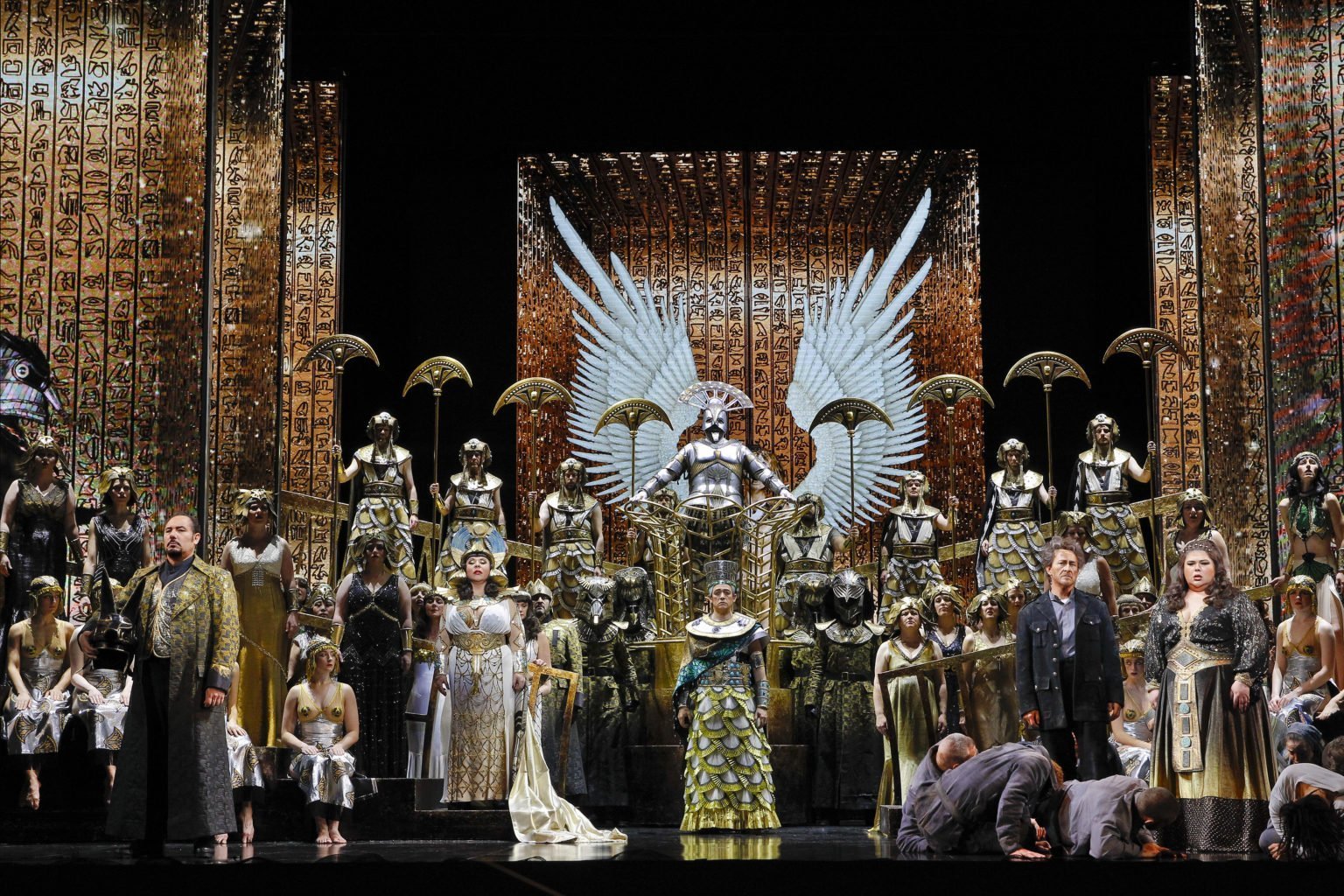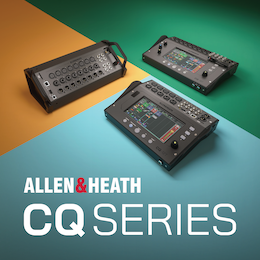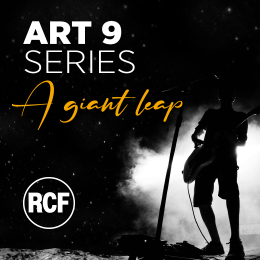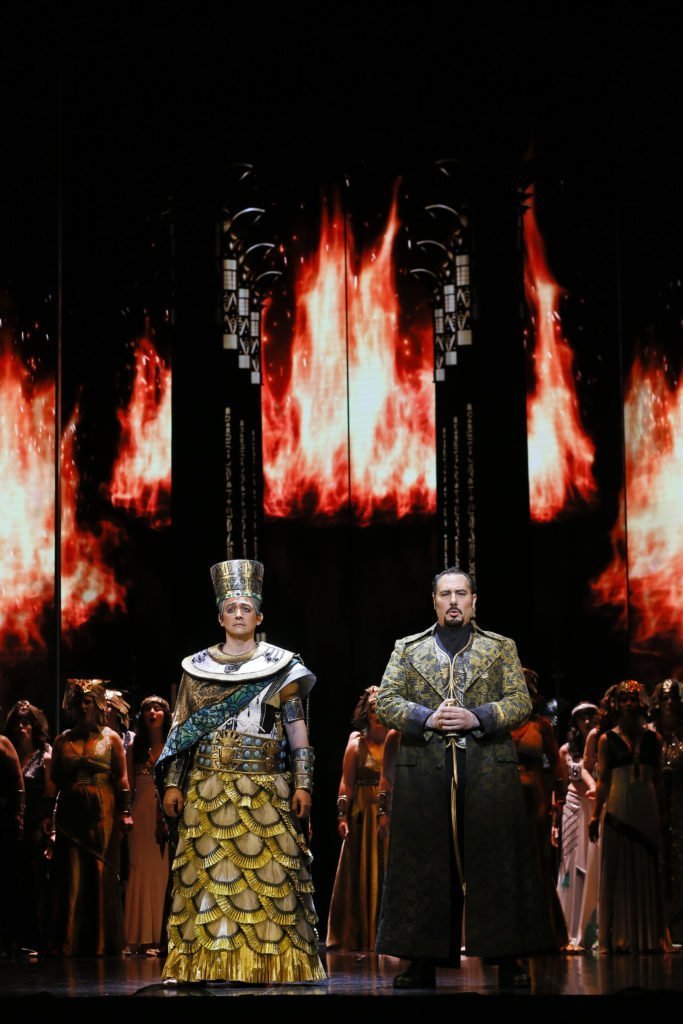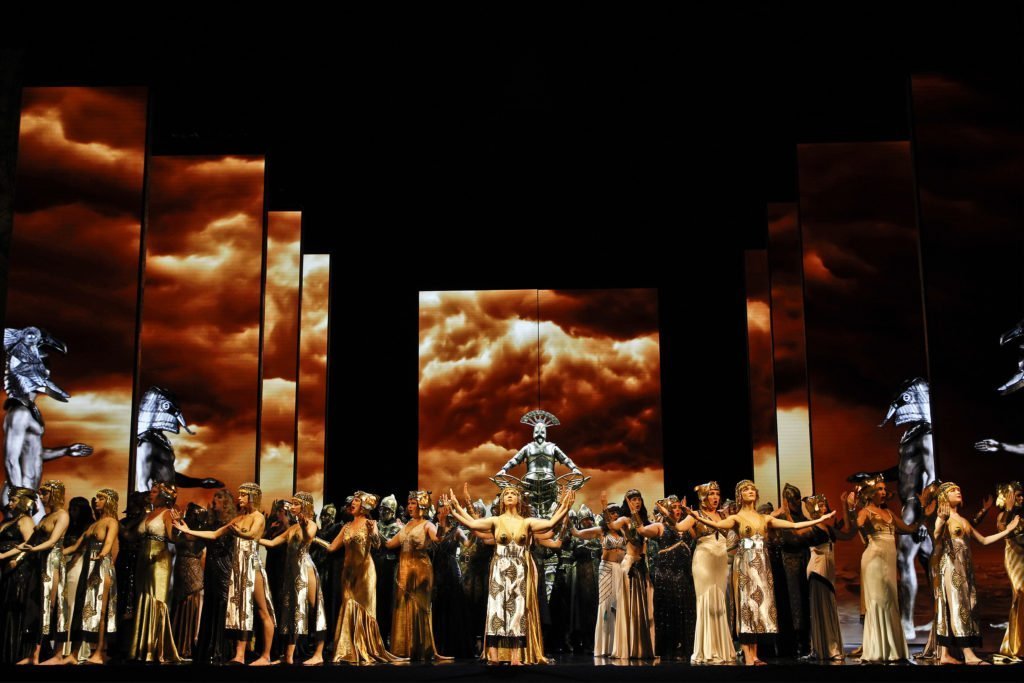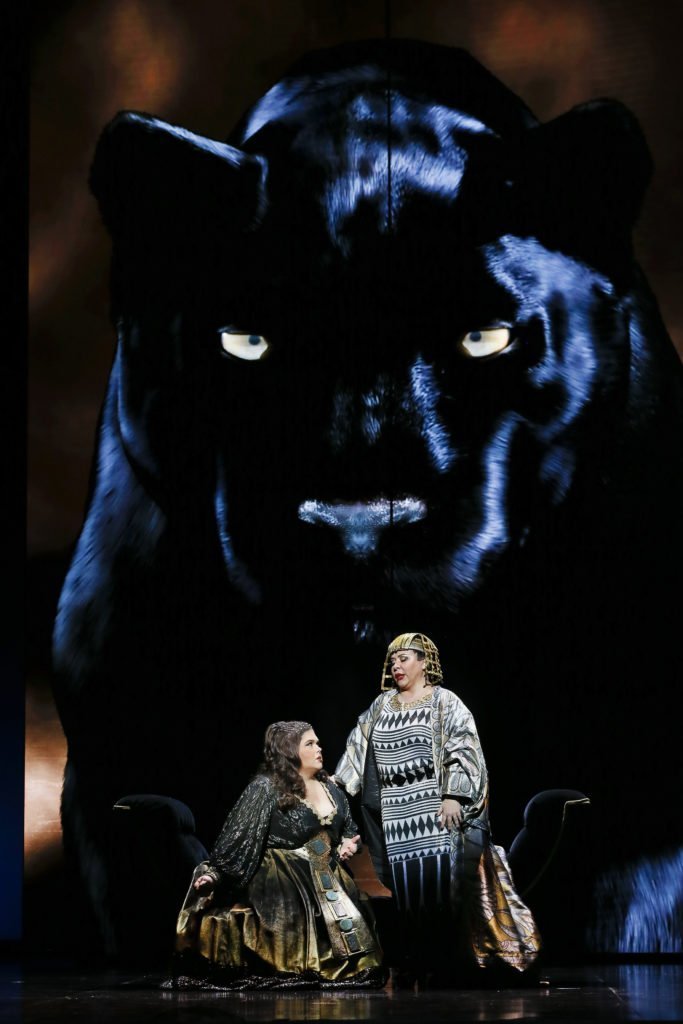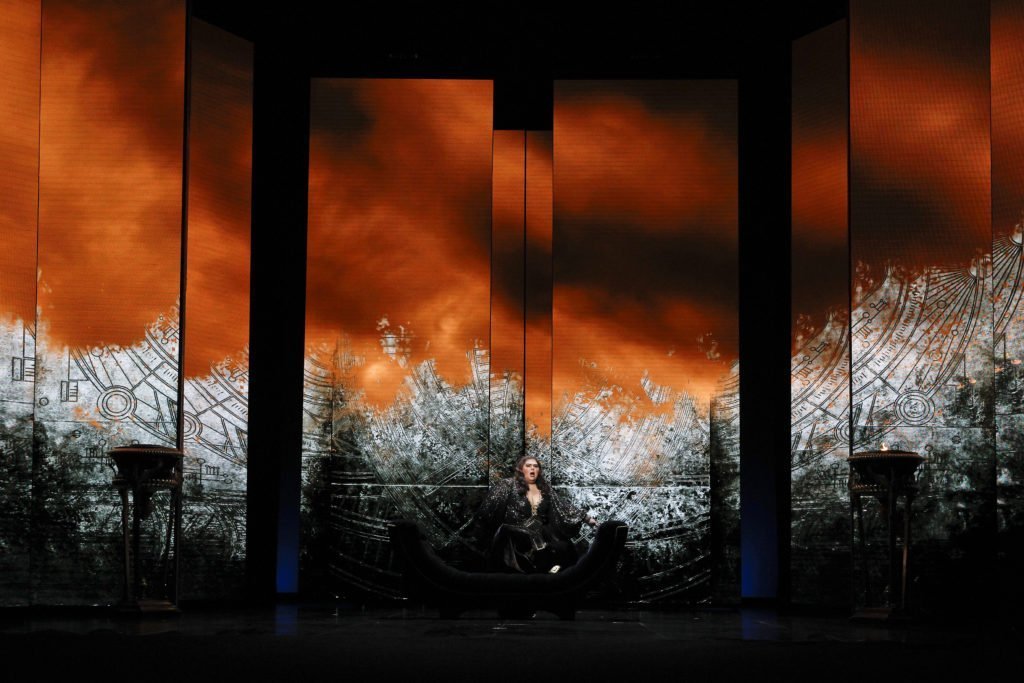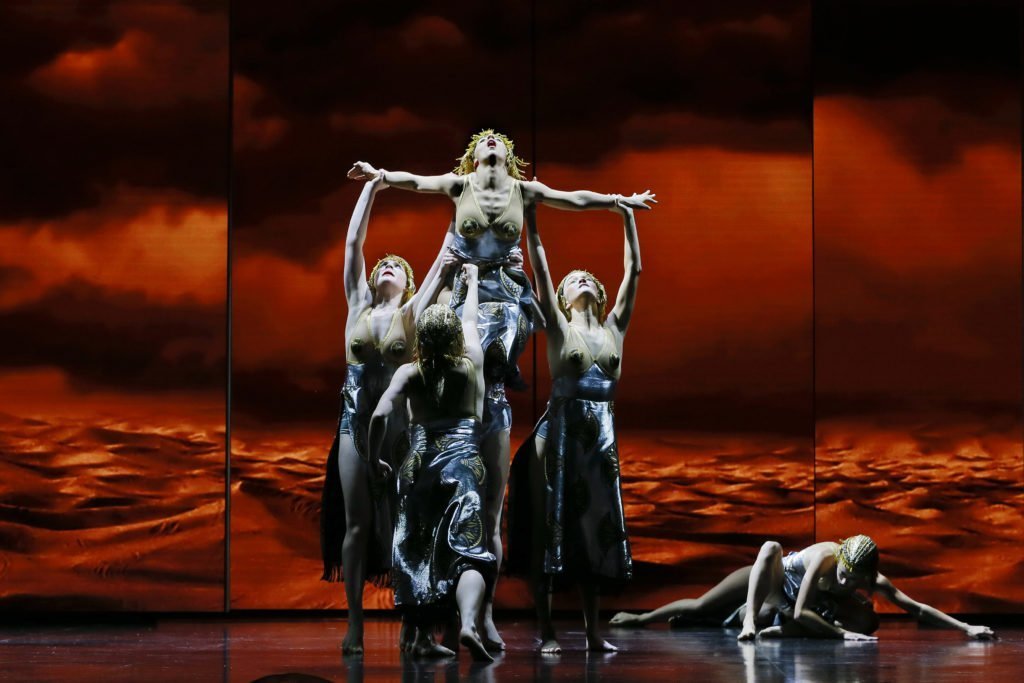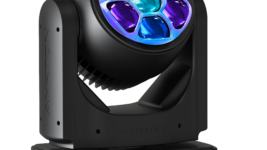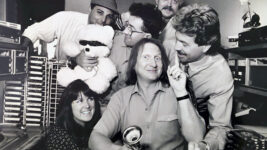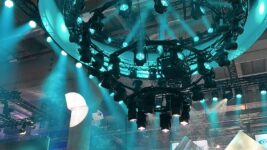Subscribe to CX E-News
Finally making its delayed Melbourne debut, Verdi’s Aida helped fully re-open the State Theatre in spectacular style over eight performances in May. The digital production is a masterclass in automation and the integrated use of big screen visuals. Ten seven-metre-tall columns of high definition LED are the technical stars of the show, flying, rotating, tracking and constantly transforming to envelop the audience in ancient Egypt.
The stunning all-Italian creative from set designers Giò Forma, digital content makers D-Wok, and costume designer Gianluca Falaschi all work together to create lavish tableaux of gold and power. While the digital content and huge moving screens could have been gimmicky and distracting, it’s the opposite, adding dramatic weight and power to the opera.
The creative and directorial decision to let the screens completely take over during the opera’s iconic Triumphal March was pure genius. Extremely elaborate productions of Aida have been staged in some dramatic settings; in front of the Pyramids of Giza, for one. The Triumphal March is traditionally the most over-the-top part of the production, where you parade the elephants, camels, horses, and supporting cast of thousands. In this production, all cast left the stage, and the screens performed a graceful ballet while a stunning visual of an Egyptian general on horseback filled the screens. Not only was this creatively brave, it was technically brilliant.
I dropped in on the tech crew of Aida around lunchtime before opening night, while the crew were still hanging and aligning the screens. OA’s technical director Clif Bothwell and freelance media server programmer and operator Peter Lynn were there to talk me through how they make the magic.
“The seven-metre-tall panels are broken down into three sections two metres tall and a one metre section at the bottom,” explains Clif. “We then build them up, with scenic wooden backing panels on the back. These screens can track on and off, and move up to 16 metres here in the State. They can rotate 540 degrees in both directions, and we can fly them in and out if we want, but we’re not doing that in this production.” All screens, media servers, and video processing are provided by Big Picture, along with a video tech.
With Aida being presented in repertory along with a traditional production of Verdi’s Ernani, whose old-school wooden set sat upstage and side-stage of Aida, getting the productions swapped over takes about the same amount of labour hours of a traditional season. Purely digital seasons offer huge cost savings in labour, but increased technical complexity and a lot more pre-vis and programming.
During the show, video cues running on disguise gx 2c media servers are triggered from the ETC lighting desk. Positional and movement data from both the Kinesys chain motors and Waagner Biro flying system are fed to the d3 via PosiNET, enabling some stunning visual tricks as the screens move and rotate, like the illusion that the image stays static.
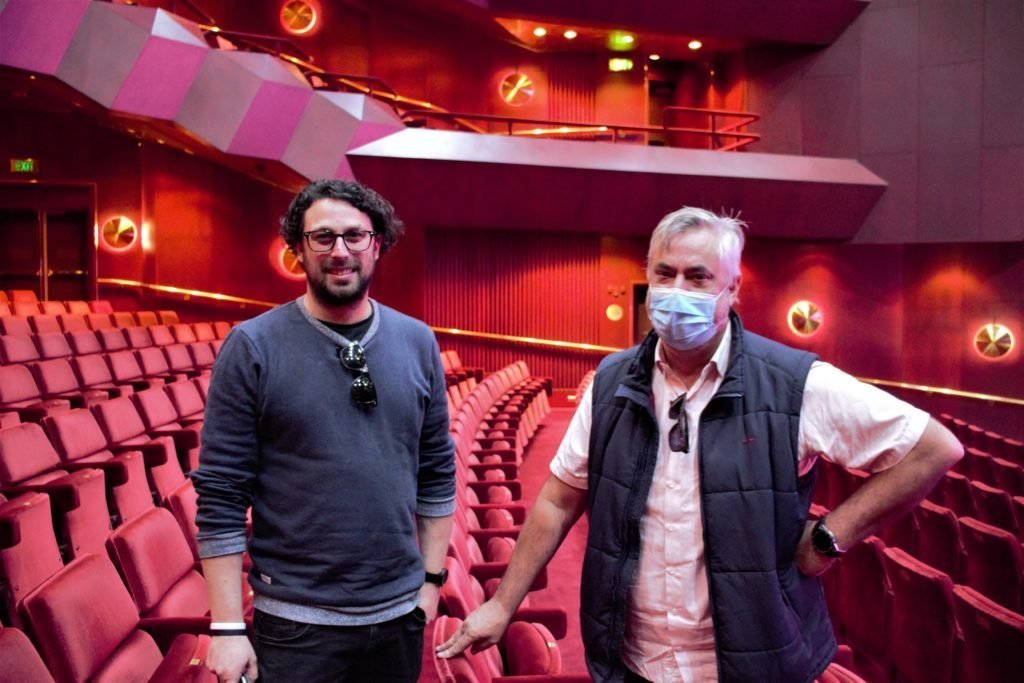
“The image canvas is just under 8K wide,” explains freelance video tech Peter Lynn. “There’s two 4K outputs feeding OP and PS independently. There are different techniques used in disguise to map the content to the screens for the different looks. One of the main ones is Parallel Mapping, which is what enables an image to appear to stay in the same spot during a screen move. This is a lot more technical than throwing a video up on a rear LED screen at a conference! The gx 2c servers live up on level 7, with KVM and fibre running back to bio box. The signal output is HDMI, via Brompton processing.”
“Getting the screens perfectly aligned with each other is a challenge,” adds Clif. “We’re running on our Kinesys chain motors, so we’re not asking too much of the State’s flying system. Sideways motion is via a Raynok truss system, which has been a great addition to our automation requirements. Our biggest physical problem is balancing the screens with the scenic wooden backing panels. If not centred, they’ll kick out a little bit. We are now changing in and out every day, and getting everything back perfectly where it was.”
Subscribe
Published monthly since 1991, our famous AV industry magazine is free for download or pay for print. Subscribers also receive CX News, our free weekly email with the latest industry news and jobs.


